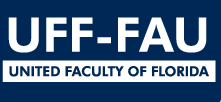[Preface: UFF consistently advocates for the state legislature to increase funding for public higher education in order to ensure its affordability for students from all socio-economic backgrounds]
The Chronicle of Higher Education
March 26, 2019
Katherine Mangan
High-achieving but financially needy students who settle for colleges that won’t challenge them may be the victims of “underrecruiting” by public universities that are too focused on drawing in wealthy students from other states.
That’s the contested conclusion of a report released this week by the Joyce Foundation, a policy-research group focused on equity.
The study, led by researchers from the University of California at Los Angeles and the University of Arizona, finds that public universities trying to make up for cuts in state support are using recruiting practices that are biased against low-income and minority students.
The 15 universities studied in the report made far more high-school visits out-of-state than in-state. In both cases, they disproportionately targeted private schools and those in affluent districts.
The reasons for the shift are clear, the report says: When states disinvest in higher education, their universities respond by putting a higher priority on students who will bring in the most money. Colleges facing the biggest budget crunches are the likeliest to aggressively recruit wealthy out-of-state students.
The result of these recruiting patterns, the report says, is “a student composition where low-income students of color feel increasingly isolated among growing cohorts of affluent, predominantly white, out-of-state students.”
Meanwhile, high-achieving low-income students are often diverted to regional state colleges and community colleges, the report says.
And while theories about so-called undermatching usually focus on the behaviors of students who sell themselves short, more attention should be paid to the priorities of the universities that are overlooking them, the report recommends.
A few public universities bucked the trend. For example, most of the University of California at Irvine’s public-high-school visits in the Los Angeles metropolitan area were to predominantly minority communities. Only a few visits were in predominantly white communities.
But like the University of California at Berkeley and North Carolina State University, which also emphasized in-state recruiting, the reasons may have as much to do with nonresident enrollment caps as with a philosophical commitment to home-grown talent.
The institutions singled out in the report dispute the report’s conclusions that they’re shortchanging their own states’ students. State budget cuts, they argue, have forced them to recruit more heavily out of state. They also point out that much of the resulting revenue is then directed to scholarships and other support for in-state students.
“We have really worked hard to build a diverse community, and out-of-state recruitment is one aspect of that,” says Edward F. Blaguszewski, a spokesman for the University of Massachusetts at Amherst. “We take that money and put it back into the university,” where 75 percent of the students are Massachusetts residents.
Much of the money goes to financial aid, Blaguszewski adds. The percentage of underrepresented minority students in the first-year class on the flagship campus has increased from 11 percent in 2009 to 17 percent in 2018, he notes.
Fourteen of the 15 universities cited in the Joyce report had seen significant drops in state support since 2008. While public support for higher education is inching up in most states this year, it has yet to recover.
On average, states spent 16 percent less per student last year than in 2008, according to the Center on Budget and Policy Priorities.
At the same time, many states have barred universities from raising tuition, forcing them to come up with other revenue sources.
“Colleges are in this race to find wealthier students to make up for the money they’re losing from their states,” says Sameer Gadkaree, a senior program officer at the Joyce Foundation. He says he hopes college leaders will respond to the report by focusing more intently on “developing talent within their own states.”
Critics of the report raise other objections. Some city schools lack the resources to host college visits, so an assistant provost for diversity at the Massachusetts flagship reaches out to high-school counselors to help attract students, Blaguszewski says. “We need to do more,” he adds, “but we believe we are on the right path.”
Monica Watts, a spokeswoman for the University of Alabama, says high-school visits are just one small component of the recruitment process. “This report does not take into account the many other efforts we undertake daily to recruit students, or that recruitment fairs are not hosted by all schools,” she wrote in an email.
The university, she says, “is committed to recruiting academically qualified students from all areas of the country.”
Peter McPherson, president of the Association of Public and Land-Grant Universities, questions whether it’s fair to base conclusions on only 15 of the 200 or so universities his association represents. He also believes that the researchers missed a lot of school visits by counting only those that were listed on the university’s websites.
One of the lead researchers, Ozan Jaquette, is an assistant professor of education at UCLA.
He acknowledges that some universities will, in fact, take the money they bring in from out-of-state students and apply it toward in-state scholarships. But the study also found that many of the students being recruited from out of state had been rejected by their home flagships.
What these less-than-top-notch scholars may be most interested in, he said, are amenities like rock-climbing gyms and lazy rivers. In that case, he says, that’s where much of the money may end up going.
Katherine Mangan writes about community colleges, completion efforts, and job training, as well as other topics in daily news. Follow her on Twitter @KatherineMangan, or email her at katherine.mangan@chronicle.com.

